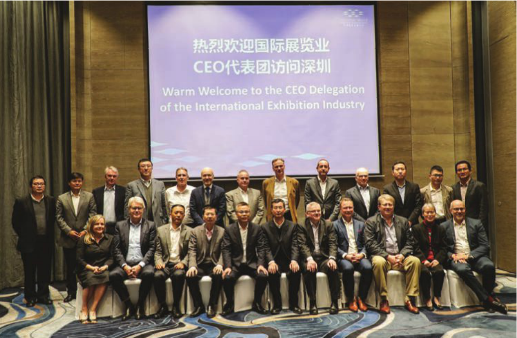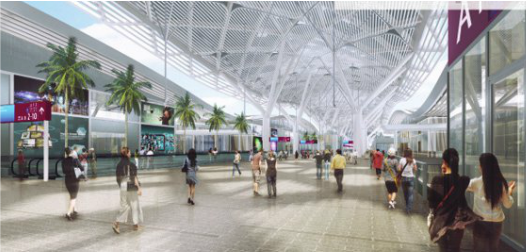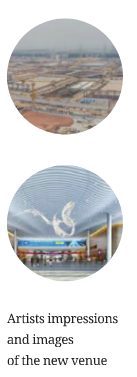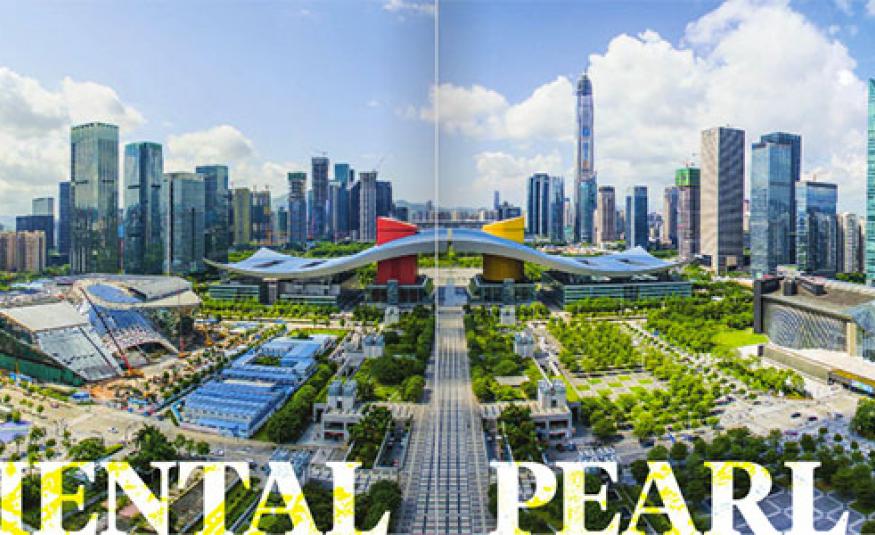EW looks at Shenzhen, home to one of the largest exhibition venue construction projects in the world – in one of the world’s hottest neighbourhoods - Words by Antony Reeve-Crook
The development of the Shenzhen World Exhibition and Convention Center (SWECC) in China is whetting organisers’ appetites all over the world.
In March, the International Organisers Network (a joint strategic partnership between UK event organiser association the AEO and north American counterpart SISO) visited the construction site and attended a workshop addressing key topics for the future operation of the venue.
Organisers including Clarion, Informa UBM, Reed and Tarsus, together with European organisers Fiera Milano and Comexposium met with representatives of the government of Shenzhen, operators Zhaohua International Exhibition Operation, SMG and investors CMSK and OCT, and a familiar presence on EW’s pages, German consultancy JWC.
The consultancy has been advising the Government of Shenzhen and investors CMSK and OCT on the venue’s masterplan, functional design and operational efficiency since 2015.
And it’s no small undertaking. The venue will be gigantic. At launch it will offer 400,000sqm of exhibition space, divided into 18 halls of 20,000sqm connected by a central corridor with two levels, and one hall of 50,000sqm. To provide some sense of scale, around 30,000 people are working onsite throughout its construction.
Each hall comes with attached conference and meeting facilities as well as a central conference centre with a capacity for 7,500 people. To accommodate the large crowds that are expected to fill the venue, it will have three main entrances, and each hall will also have a dedicated entrance facility.
The upper level will offer fast connections throughout the venue with conveyors, while the lower level connects directly into the halls.
Shenzhen itself sits in a rather attractive neighbourhood, 120km up the Pearl River Delta, a region it shares with Guangzhou – home to China’s giant sourcing fairs – Hong Kong and Macau. JWC’s Gerd Weber likens it to Dusseldorf, Cologne and Frankfurt in Germany in terms of large-venue density and industrial significance; but Germany has a population of only 80 million.
 Local infrastructure is improving in-step. The Shenzhen bridge will span the Delta in five year’s time, bringing Guangzhou centre to within an hour’s travel of the new venue. The boat from Hong Kong to Shenzhen already takes only 45-50 minutes.
Local infrastructure is improving in-step. The Shenzhen bridge will span the Delta in five year’s time, bringing Guangzhou centre to within an hour’s travel of the new venue. The boat from Hong Kong to Shenzhen already takes only 45-50 minutes.
Shenzhen airport is larger than Munich’s in terms of the number of people served, with direct links to key Asian cities including Bangkok, Seoul and Manila. The airport itself is two metro stations away from the venue.
The city has a population of 17 million, almost none of whom originated in what was once a small fishing village. Today it is the fourth most populous city in China, outpacing both its neighbours Hong Kong and Guangzhou, and third in terms of GDP.
The city’s growth follows a very clear strategic decision by central government. Its economy is not built on steel or cars. Local industry is built around advanced technology. Huawei is based here, as is social media giant WeChat, with other companies based in biotech and finance industries. And without longstanding, traditional markets, the economy in Shenzhen is moving faster than others in terms of GDP.
JWC was involved when the only other non-public party was the architecture firm. While the architects were working on creating a signature addition to the Shenzhen skyline, JWC set about getting the functionality right.
Mixed functionality is necessary due to the venue’s city location, it’s at the right place for many businesses to take advantage of it.

Maintaining neutrality
There are of course precedents for venues opening in China with the objective of catering for the needs of organisers from elsewhere.

But unlike in the case of SNIEC in Shanghai, a collaboration with three German organisers and consequently limited in its appeal to others, there are no organisers involved in the creation of SWECC.
In the case of SWECC organisers have not been involved in the operation. Protectionism will not be an issue, and Shenzhen’s local government understands very well the value that working with an internationally connected team can bring. There is little fear of private organisers being gazumped by local organised events.
“With the SECC in Guangzhou, or SNIEC in Shanghai, the organising companies are also operating the venue,” says Weber. “However this partnership is between CMSK and SMG, neither of which are event organisers.” It’s a very neutral arrangement and profile protection is not an issue.
SMG has been on board since 2017, providing expertise about the inbuilt technical functionality, and the US company will also operate the venue – something made easier by the company’s relatively early involvement in, and ability to advise on, the project.
“Top functionality in the wrong location will never help you, you’ll only ever use 10 per cent of the capacity.
“And when you’ve got to 400,000-500,000sqm to fill, it’s a very different proposition,” says Weber.
Construction of the venue will be complete in June 2019, with a soft opening taking place in the second half of the year. The venue will accept bookings from mid-2018.
Read the feature in Exhibition World (Issue 2 | 2018) here.






